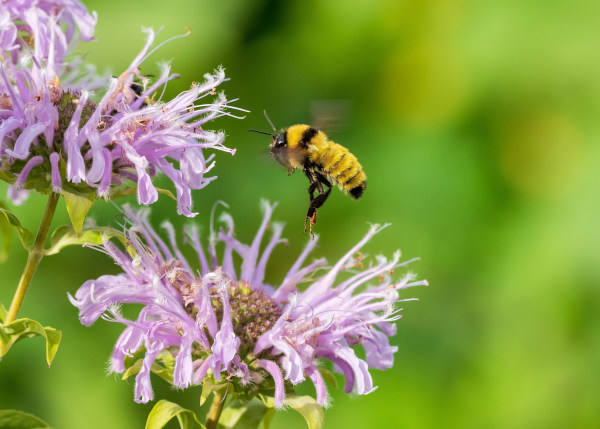How to grow Monarda
Commonly known as Bee Balm, Bergamot and Horsemint – this is an incredibly aromatic plant which blooms throughout the summer and does exactly as you would anticipate by the first of these common names!
Monarda will lure in hosts of pollinators such as bees, butterflies and moths as it is a rich source of nectar for these insects. Seedheads are also great as a source of sustenance to birds over winter, providing you allow them to remain on the plants.
A relative of the mint family, monarda can be annuals or, more commonly, clump-forming herbaceous perennials – dependent upon variety. All have aromatic, ovate leaves and terminal whorls of 2-lipped, tubular flowers which rest upon decorative bracts. Monarda didyma, Monarda fistulosa and Monarda punctata are the three most popular of the 16 varieties available, with Monarda didyma being favoured by Hayloft. Plants are native to North America and have tall, sturdy, square stems along with a generous, spreading habit. Their popularity means that many cultivars and hybrids exist in a wide array of colours from red to purple, violet and white.

Zantedeschia is a genus of flowering plants from the family Araceae and is native to southern Africa. With a rich history dating back to the Ancient Romans, these deciduous or semi-evergreen perennials have been used as a symbol of celebration. Zantedeschia was Named after Professor Giovanni Zantedeschia, an Italian botanist.
There are two main forms of Zantedeschia: hardy and tender. Hardy forms of the plant can be grown outdoors, enjoy moist soil and full sun or partially shaded conditions - these are known as Arum lilies. Tender forms of Zantedeschia prefer being grown in containers or pots and should be brought inside over the winter - these are known as Calla lilies.
With tuberous flora in all colours from whites, yellows and oranges to deep reds and purples, Zantedeschias are not to be overlooked in any garden, as long as they have sufficient sunlight to grow in.
Ready to learn more about growing Zantedeschia? Read on for all there is to know...

Key Information
Soil pH
Position
Hardiness


Where & when to plant Monarda
Position- Dappled shade to full sun with a south or west facing aspect
Soil- Clay to sandy soils which are moist yet well-drained
Flowering Period- throughout summer
Hardiness- mostly hardy
Best planted in late spring to early summer. Choose a site which benefits from some sun throughout the day and is not waterlogged or prone to flooding. Ideal for informal borders, wildflower and prairie gardens. Plant according to the mature height of your chosen variety – ideal for paths and gateways where aromatic scent will be released when foliage is brushed past.
How to plant Monarda
In the ground
- Clear the chosen area of weeds and loosen surrounding soil.
- Dig a planting hole twice the size of the rootball and adjust the structure of the soil with compost, sand or grit as appropriate.
- Place the plant in the hole, ensuring the top of the root ball sits level with the surface of the soil. Too low and the plant may rot, too high and the roots can dry out.
- Backfill with soil and firm in gently using your hands.
- Water well and water weekly until a good root structure has been established.
In a container
- Choose an appropriate container, ensuring it is a) deep enough for roots to spread and b) there are plenty of drainage holes in the bottom.
- Use a good quality potting compost with some horticultural grit mixed in.
- Start by partially filling the pot with compost; enough so that when placed on it the upper surface of the root ball is about 3cm lower than the top of the pot.
- Infill all the space surrounding the root ball with compost, firming down with your fingers then adding a little more so the plant is held tight.
- Tap the container to help further settle the compost around the plant and ensure there is a gap between the top of the pot and the top of the soil of at least 2cm.
- Water well.
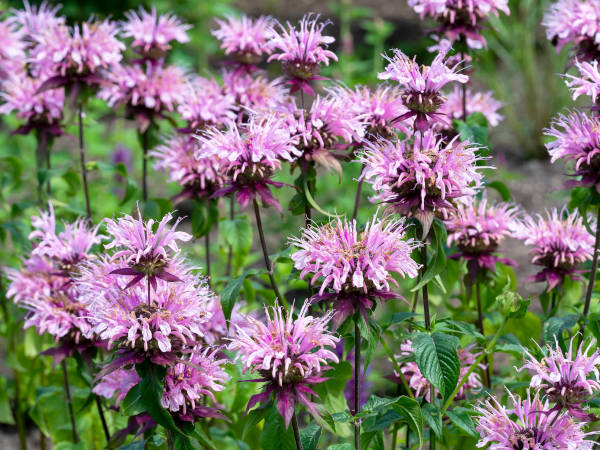
What to plant with Monarda
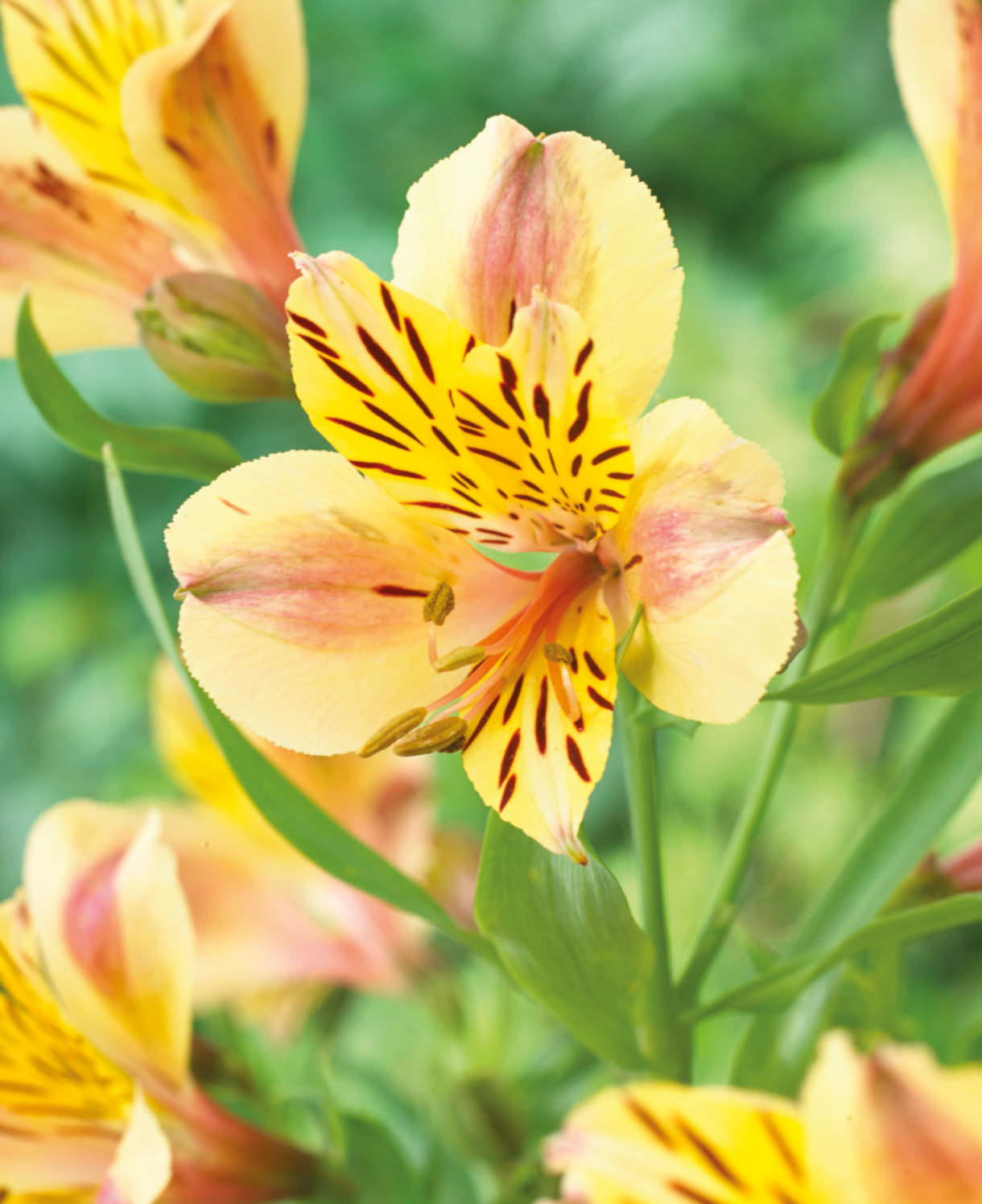
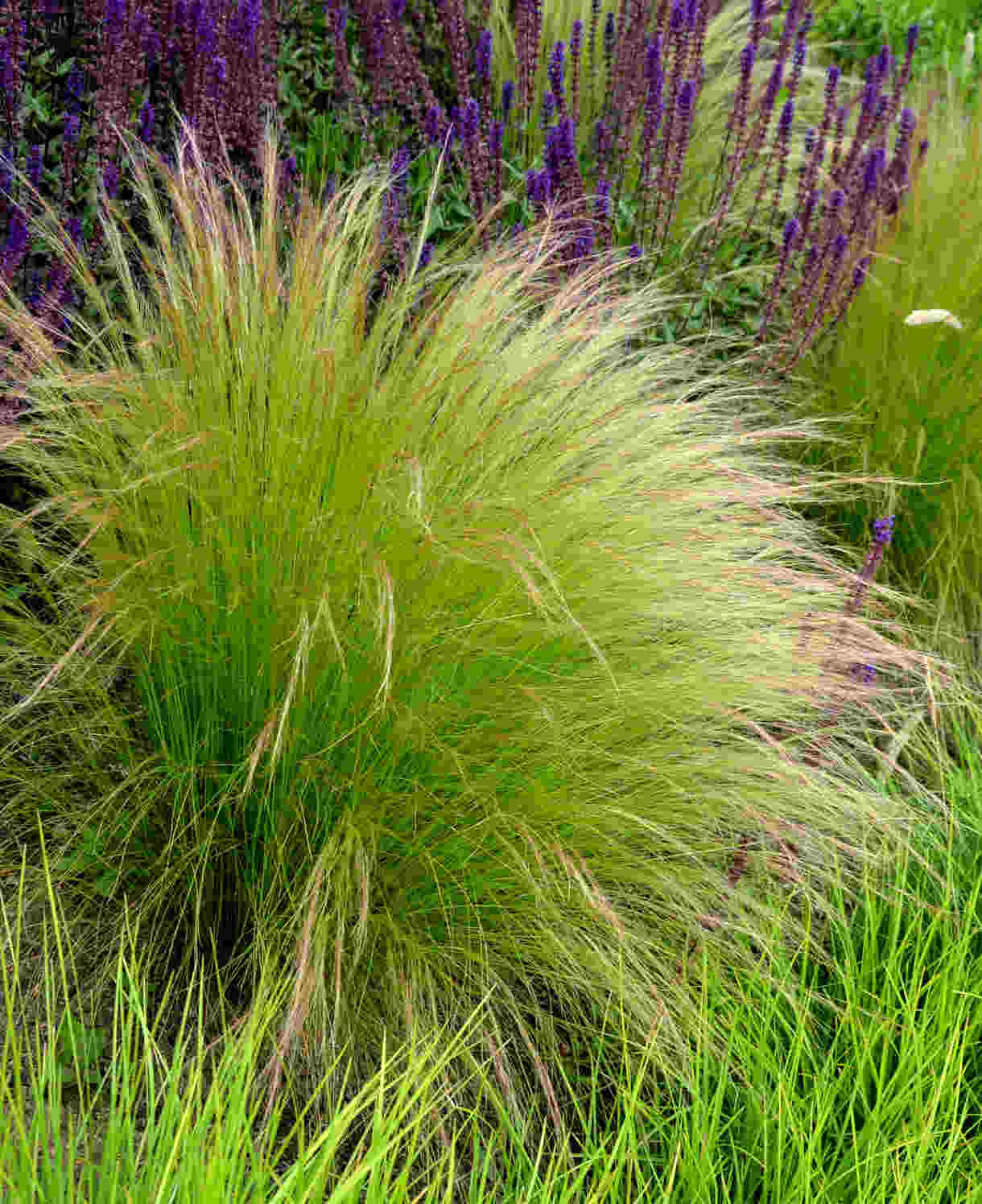
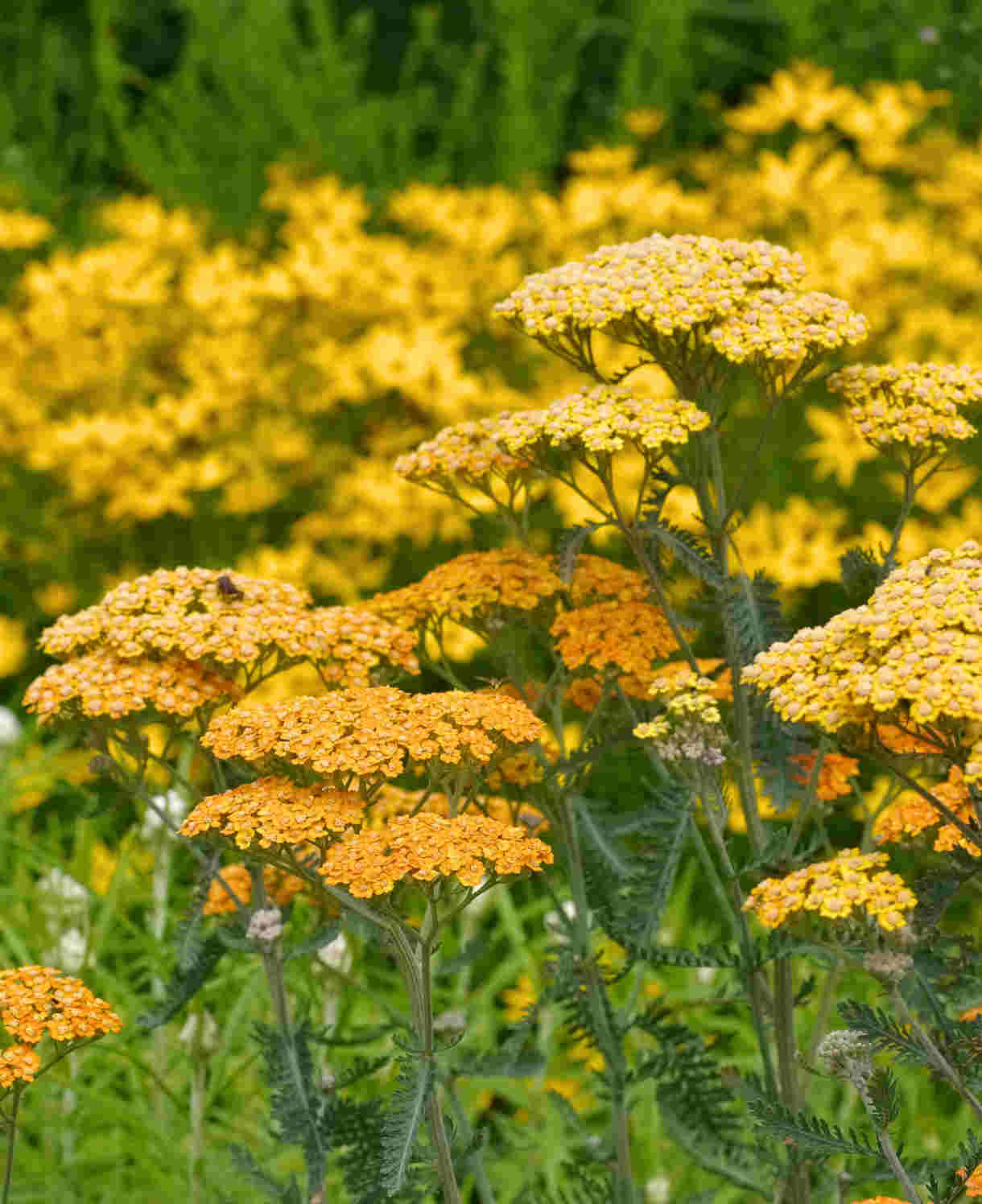
How to care for Monarda
Pruning and Deadheading
Deadhead to prolong flowering, and trim back faded foliage if you wish. These herbaceous perennials will die down naturally during winter.
Watering
Water until established, then in dry spells thereafter as monarda do not like dry soil for long periods. Well-established roots and our climate will usually take care of this, though do be mindful during long spells without rainfall.
Cold Protection
Given adequate drainage, monarda should overwinter easily if a hardy variety as these can tolerate temperatures as low as -5°C. Do check the cultural notes which come with each plant to be sure though and if in doubt – mulch plants for further protection.
As with all plants, those grown in containers can be more easily damaged by frosts and excessive winter wet. If you garden in an area prone to particularly cold winters, it can be a good idea to move pots into a cold frame or unheated greenhouse. If this is not an option, try wrapping your containers in fleece or hessian and moving them to where they will receive less rain, such as in the rain shadow of a wall.
Pests and Diseases
Can be susceptible to powdery mildew so ensure good air circulation around plants, ensure soil remains moist and water the ground not the plant. Remove any diseased stems on sight. Beneficially resistant to rabbits and deer.
How to propagate Monarda
Monarda are vigorous in the right conditions and should be divided every 3 years or so in springtime. Pot on divisions or transplant to new location immediately if clumps are large enough.
Common Monarda questions
Can I put these flowers in a vase or bouquet?
Monarda are excellent cut flowers, with a vase life of up to a week. Pick them just as the buds are opening for extended vase life. As with all cut flowers, picking first thing in the morning or later in the evening, when moisture levels are high, will also increase their longevity.
Is Monarda used to make tea, it smells familiar?
Whilst the bergamot scent in Monarda is similar to that of Earl Grey tea, and derived from bergamot oil, it is not the ingredient used – that is Bergamot Orange. However, the North American Oswego tribe did indeed use it for making tea back in the 18th century and it is still used in cosmetic manufacture to this day.
Will Monarda grow in shade?
Whilst you may be able to sustain foliage on the plant in shade, it will not flower very much in these conditions. Monarda require some sun for part of the day, or the equivalent of dappled shade, in order to thrive.
